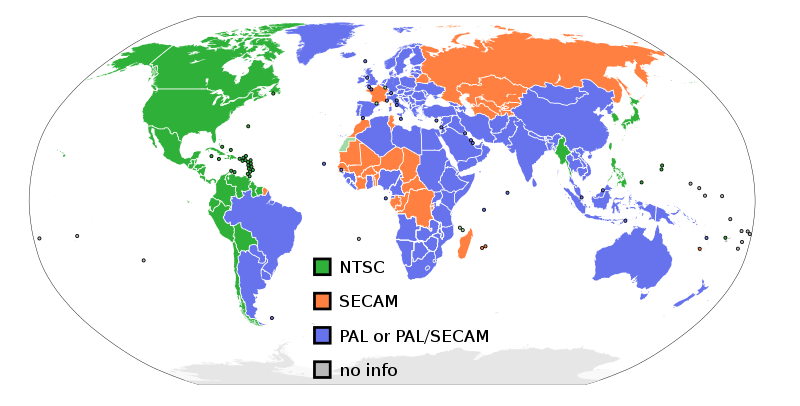Broadcasting Systems
The broadcasting systems consists of three different systems, PAL, SECAM and NTSC. When colour television was being introduced around Europe PAL and SECAM were created, this was after the 1950s. Before this NTSC had been introduced into America and Asia in 1941 and then introduced in colour in 1953. SECAM was the first to introduce colour television in Europe, and used a different way of transmitting colour to NTSC. However PAL being the standard for the UK improved the original NTSC method to transmit colour television.
PAL stands for Phase Alternation Line. This is the UK stand in much of Europe, including United Kingdom. This is made up of 25 frames per second and it has 625 lines. 576 of the lines are used to show the picture.
NTSC stands for National Television System Committee. This is the TV standard in the US. This is made up of 29.97 frames per second and 525 lines. 480 of the lines are used to show the picture.
SECAM stands for Sequential Color with Memory. This is a French system that is very similar to PAL, however it sends colour signals separately.









